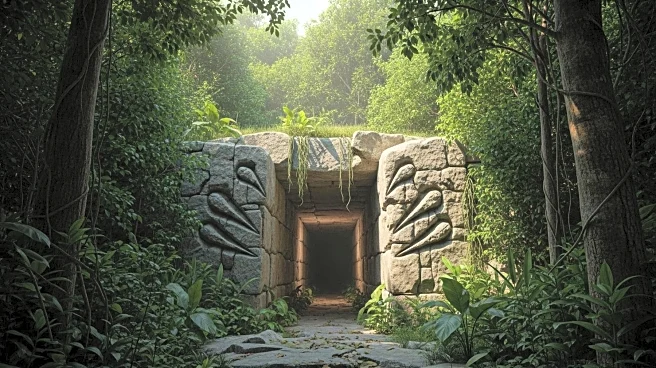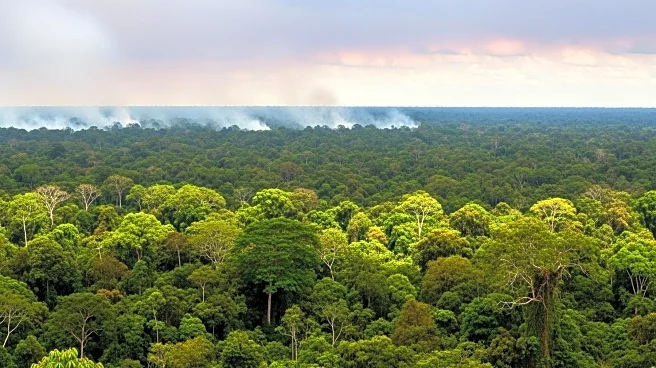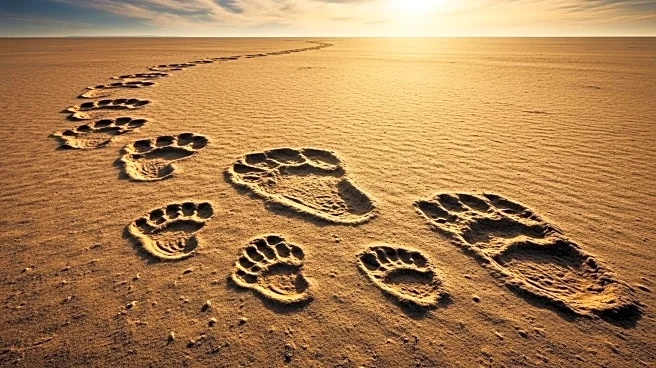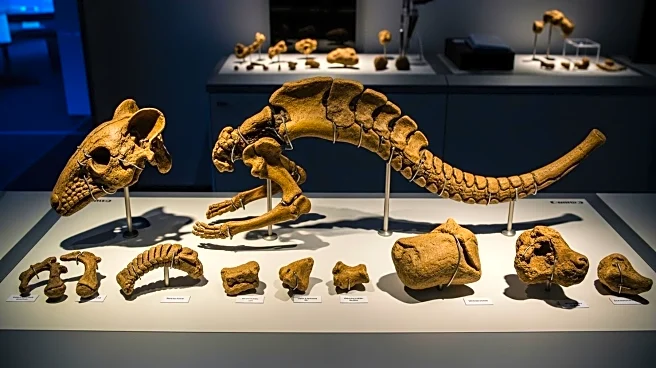What's Happening?
A series of ancient tunnels discovered in southern Brazil have been attributed to extinct giant ground sloths, rather than human activity or natural geological processes. These tunnels, found in the Grande do Sul region, measure approximately 1.8 meters in height and 600 meters in length. The theory, published in a 2018 study in Science Advances, suggests that these tunnels were created by sloths during the Pleistocene epoch, which spanned from 8,000 to 10,000 years ago. The tunnels feature claw marks and other distinct characteristics that align with the anatomy of these prehistoric creatures. Researchers believe that humans may have interacted with these sloths, possibly hunting them, as human footprints have been found in patterns suggesting stalking behavior.
Why It's Important?
This discovery provides new insights into the behavior and capabilities of extinct species, particularly the giant ground sloths. It challenges previous assumptions about the interactions between humans and large prehistoric animals, suggesting a complex dynamic that includes hunting and possibly cohabitation. Understanding these interactions can offer valuable perspectives on human evolution and adaptation during the Ice Age. Additionally, the findings highlight the importance of reevaluating historical narratives based on new evidence, which can reshape our understanding of ancient ecosystems and the species that inhabited them.
What's Next?
Further research is likely to focus on the detailed study of these tunnels to uncover more about the extinct sloths' behavior and their interactions with humans. Archaeologists and paleontologists may conduct additional excavations and analyses to explore the extent of these tunnels and their implications for understanding prehistoric life. This could lead to broader studies on the impact of extinct species on their environments and the role of humans in their extinction.
Beyond the Headlines
The discovery of these tunnels may prompt ethical discussions about the preservation of ancient sites and the responsibilities of modern societies in protecting historical artifacts. It also raises questions about the long-term impact of human activities on biodiversity and the environment, offering lessons for current conservation efforts.











